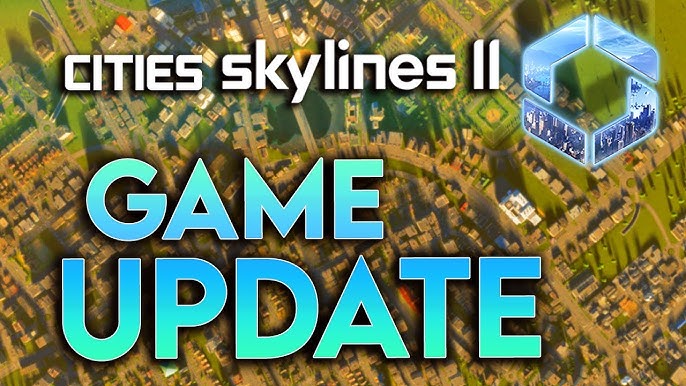The Last of Us PC Port Issues: A Tale of Optimization, Ethics, and Community Backlash The PC launch of The Last of Us Part I in early 2023 was, to put it mildly, a disaster.

The PC launch of The Last of Us Part I in early 2023 was, to put it mildly, a disaster. Players, eager to experience Naughty Dog's critically acclaimed masterpiece on their rigs, were instead met with a barrage of technical issues that rendered the game unplayable for many. This article delves into the specifics of those problems, the ethical implications of Sony's pricing strategy given the game's flawed state, and contrasts Naughty Dog's response with the exemplary handling of technical hiccups by Larian Studios with Baldur's Gate 3. It’s a story of a botched launch, a frustrated community, and a stark reminder of the importance of polish in PC game releases. Why is The Last of Us PC so poorly optimized? The answer is multi-faceted and requires a look into game development culture.
The State of the Port: A Technical Breakdown
The complaints surrounding The Last of Us PC performance problems centered on three primary issues: shader compilation stutters, excessive CPU usage, and VRAM limitations. Even users with high-end systems, boasting the latest CPUs and GPUs, found themselves wrestling with unacceptable frame rates and constant stuttering.
Shader Compilation Stutter: The Bane of Many Players
Shader compilation, a process where the game translates its visual assets for your specific hardware, was a major culprit. Unlike pre-compiled shaders that are included with the game, The Last of Us Part I forced players to compile shaders on the fly, leading to significant stuttering, especially in the early hours of gameplay. The before-and-after screenshots showcasing the impact of early patches on shader compilation stuttering are significant.

CPU and VRAM Overload: A Resource Hog
Adding insult to injury, the game exhibited unusually high CPU usage, often maxing out even powerful processors. This, coupled with demanding VRAM requirements, further exacerbated the performance issues, leaving many players unable to enjoy a smooth experience. The system requirements highlight a concern of system resources versus graphical quality.

One Steam reviewer lamented, "I have a 3080 and an i9, and this game runs worse than Cyberpunk 2077 at launch." Multiple Steam reviewers criticized the game's $60 price tag, given its unplayable state on even high-end systems. The question then becomes, what are reasonable minimum specs for smooth gameplay?
Addressing Last of Us PC Stuttering Fix: The Quest for Optimization
Many players searched for a Last of Us PC stuttering fix. While subsequent patches have addressed some of these issues, the initial state of the game was simply unacceptable. This raises serious questions about the pre-launch testing process and the quality control measures in place.
The Ethical Question: Pricing and Undisclosed Testing
The launch of The Last of Us PC performance problems has sparked debate about the ethical implications of Sony's pricing strategy. Releasing a heavily flawed port at a premium price ($60) felt, to many, like a blatant disregard for the PC gaming community. Was this a case of selling early access, without the honesty to call it such? How did the Last of Us PC system requirements unmet impact player expectations?
Pre-Release Access or Predatory Practice?
The argument is simple: selling a broken product as a finished one is inherently unethical. Players felt like they were paying to be beta testers, a role they certainly didn't sign up for. The perceived lack of transparency and the hefty price tag only amplified the sense of betrayal.
A Tale of Two Launches: Naughty Dog vs. Larian
The contrast between Naughty Dog's handling of the Last of Us PC launch backlash and Larian Studios' approach with Baldur's Gate 3 successful launch PC couldn't be starker. While The Last of Us stumbled out of the gate, Baldur's Gate 3 enjoyed a relatively smooth launch, even with minor technical issues.
Larian Studios: A Masterclass in Community Engagement
Larian's success wasn't just luck; it was a result of proactive community engagement and rapid deployment of fixes. When players encountered issues, Larian responded swiftly and transparently, acknowledging the problems and outlining concrete steps to address them. The official logo of Larian studios is a symbol of this responsive development.

Naughty Dog's Response: Too Little, Too Late?
In contrast, Naughty Dog's initial communication was slow and somewhat opaque. While they eventually released patches to address the most pressing issues, the damage was already done. The slow response fueled the Last of Us PC community outrage, as players felt ignored and unheard. The question then became: What did Naughty Dog say about Last of Us PC problems? The Naughty Dog Last of Us PC response was often perceived as insufficient and delayed.
Community Sentiment: A Chorus of Discontent
The sentiment surrounding The Last of Us PC port optimization problems was overwhelmingly negative in the weeks following its launch. A deep dive into Steam reviews, the /r/pcgaming subreddit, and Naughty Dog's support forums reveals a community riddled with frustration and disappointment.
Steam Reviews: A Torrent of Negative Feedback
Steam reviews painted a grim picture, with many users issuing refund requests and warning others to steer clear of the game until it was properly fixed. Common complaints included unplayable frame rates, constant crashing, and a general lack of optimization. The Steam reviews showcase the divide between expectations and reality.

Reddit Rants: Venting Frustrations and Seeking Solutions
The /r/pcgaming subreddit became a hub for players to vent their frustrations, share troubleshooting tips, and demand accountability from Naughty Dog and Sony. Threads were filled with reports of stuttering, crashing, and performance issues that defied logical explanation.
Naughty Dog Support Forums: A Waiting Game
The official Naughty Dog support forums were flooded with bug reports and performance-related inquiries. While moderators eventually addressed some of the concerns, the overall response was perceived as slow and inadequate.
The Price of Fidelity: Graphics vs. Performance
The Last of Us Part I is undoubtedly a visually stunning game. However, the pursuit of graphical fidelity came at a significant cost, particularly for PC players who struggled to achieve playable frame rates. Is fidelity worth the performance issues?
Sacrificing Detail for Stability
To achieve acceptable performance on lower-end hardware, players were forced to drastically reduce graphical settings, sacrificing the visual fidelity that made the game so appealing in the first place. This raises a fundamental question: what are the performance impacts of differing detail levels? Comparison shots of a highly detailed character model versus the graphical settings required to achieve playable frame rates are stark.


Why is Last of Us PC so badly Optimized?
Several factors likely contributed to the Last of Us PC port optimization problems. These include:
- Rushed Development: The pressure to release the game alongside the HBO adaptation may have led to a rushed development cycle, leaving insufficient time for thorough testing and optimization. Game development crunch culture may have had a significant impact.
- Lack of PC Expertise: While Naughty Dog is renowned for its console development prowess, PC porting requires a different skillset and a deep understanding of the platform's unique challenges.
- Shader Compilation Issues: The implementation of on-the-fly shader compilation proved problematic, leading to widespread stuttering and performance issues.
- DRM Implementation: It is believed that DRM (Digital Rights Management) also contributed to the performance issues with excessive CPU usage.
Lessons Learned: The Path Forward
The Last of Us PC port issues serve as a cautionary tale for developers and publishers alike. Proper optimization, transparent communication, and respect for the PC gaming community are essential for a successful launch.
Key Takeaways:
- Prioritize Optimization: Invest the time and resources necessary to ensure that your game runs smoothly on a wide range of hardware configurations.
- Embrace Transparency: Communicate openly with your community about known issues and the steps you are taking to address them.
- Listen to Feedback: Pay attention to player feedback and use it to inform your development process.
- Learn from Successes: Study the successes of other developers, such as Larian Studios, and emulate their best practices.
Conclusion: A Second Chance?
The Last of Us PC launch was a disappointment, but it's not necessarily a death knell. With continued patching and optimization, the game has the potential to become a worthwhile experience for PC players. However, Naughty Dog and Sony must learn from their mistakes and prioritize the needs of the PC gaming community in the future. Ultimately, gamers must decide: Is Last of Us PC worth buying now? Are the fixes sufficient?
The initial disaster surrounding The Last of Us PC port issues stands in stark contrast to the largely positive experience of Baldur's Gate 3. The comparison highlights the importance of prioritizing performance, transparency, and community engagement. Moving forward, developers must recognize that a well-optimized PC port is not simply a bonus, but a fundamental requirement for success. Check back here for ongoing updates as fixes are rolled out. You can further research, How do I fix Last of Us PC stuttering? The best way to show gratitude for the blog is to share with a fellow gamer.
**VIRAL VIDEO - The Last of Us PC Port vs. Baldur's Gate 3: A Tale of Two Launches**
**HOOK:** A close-up of a character model from *The Last of Us Part I* rapidly glitching and stuttering across the screen, suddenly cutting to a smooth, vibrant scene from *Baldur’s Gate 3*.
**SCENE:**
* Style: Fast-paced, side-by-side comparison.
* Lighting: High contrast, dramatic lighting emphasizing the visual differences.
* Camera work: Rapid cuts, slow-motion replays of glitches, and smooth transitions showcasing *Baldur's Gate 3* performance.
**TWIST:** The screen dramatically splits, showing the Steam review score of *The Last of Us Part I* plummeting while *Baldur's Gate 3*'s score skyrockets, ending with a quick text overlay: "One launch failed, the other succeeded. Why?"
**VIRAL ELEMENTS:**
* SURPRISE: Sudden visual glitches and rapid transitions.
* CLARITY: Clear contrast between the two games.
* EMOTION: Frustration with *The Last of Us Part I* and satisfaction with *Baldur's Gate 3*.
* VISUAL STYLE: High-quality, cinematic 4K.
**TECHNICAL SPECIFICATIONS:**
* CAMERA WORK: Slow-motion zoom on glitches, rapid cuts between games, orbit around *Baldur's Gate 3* character.
* LIGHTING: Dramatic shadows for *The Last of Us Part I* glitches, bright vibrant colors for *Baldur's Gate 3*.
* COMPOSITION: Low-angle shot of *Baldur's Gate 3* characters, wide shot showing the game's open world.
* QUALITY: Cinematic 4K, shot on RED.
**PACING & STRUCTURE:**
* Start IN MEDIAS RES with the glitching character.
* Hook in the first 2 seconds with the visual impact of the stutter.
* Use action words: "Suddenly glitches," "rapidly transitioning."
* Explicit twist: The split screen review score comparison.
* ONE main idea: Contrasting a disastrous launch with a successful one.
Avoid: Slow build-ups, multiple unrelated concepts, missing the review score comparison as the payoff.
FAQ
Why does The Last of Us PC run so poorly on my high-end PC?
Several factors can contribute to poor performance, including shader compilation stuttering, high CPU usage, VRAM limitations and DRM implementation. Even powerful systems can struggle if the game is not properly optimized.
How do I fix Last of Us PC stuttering?
Potential fixes include updating your graphics drivers, adjusting graphical settings, verifying the game files, and waiting for official patches from Naughty Dog. The impact of patches is represented in the following images.


Is Baldur's Gate 3 better optimized than Last of Us PC?
Generally, yes. Larian Studios invested significant time in optimizing Baldur's Gate 3 for PC, and their proactive community engagement helped them address technical issues quickly and efficiently. The differences are visualized here:
